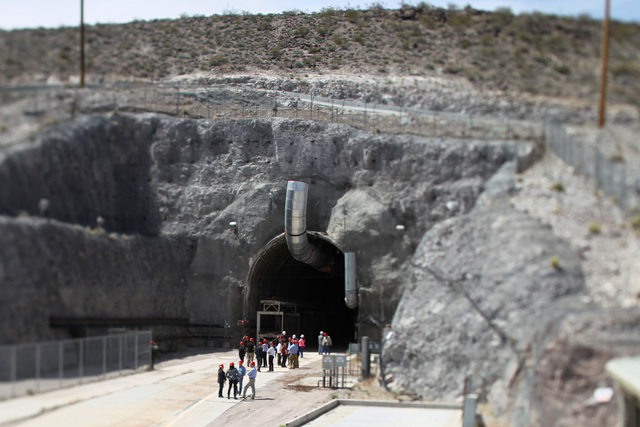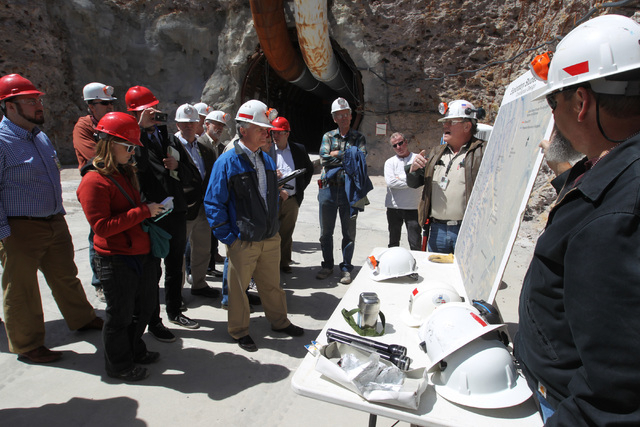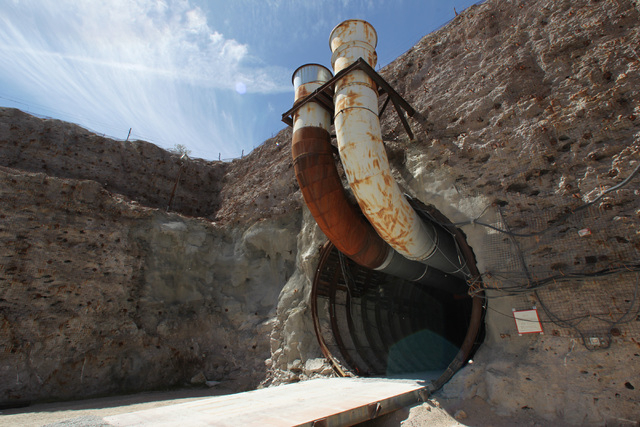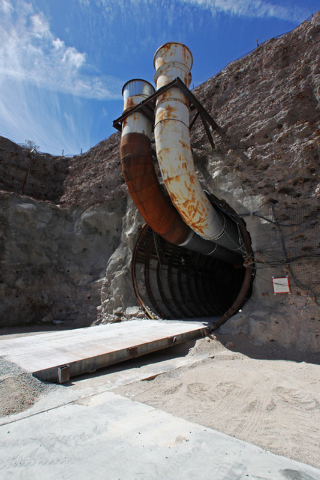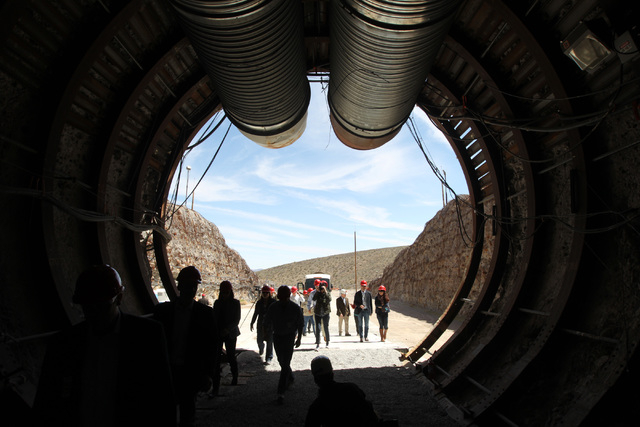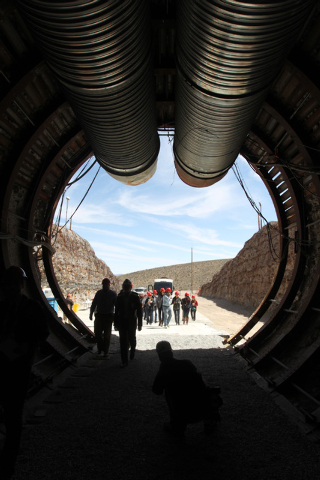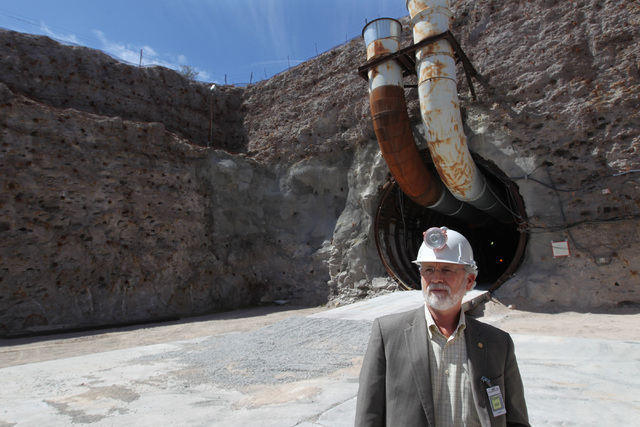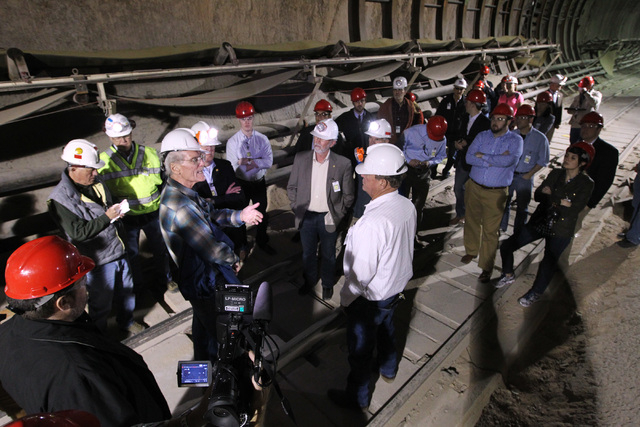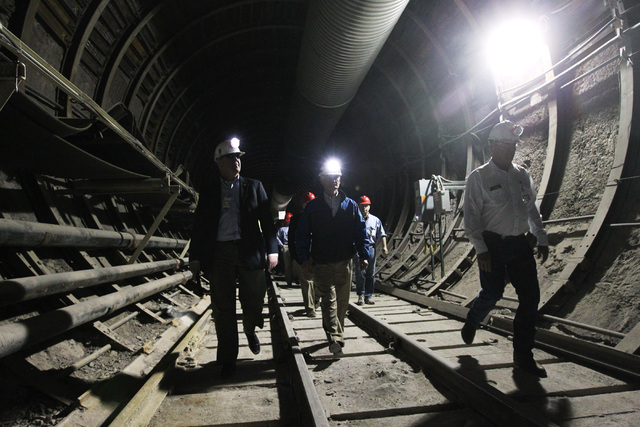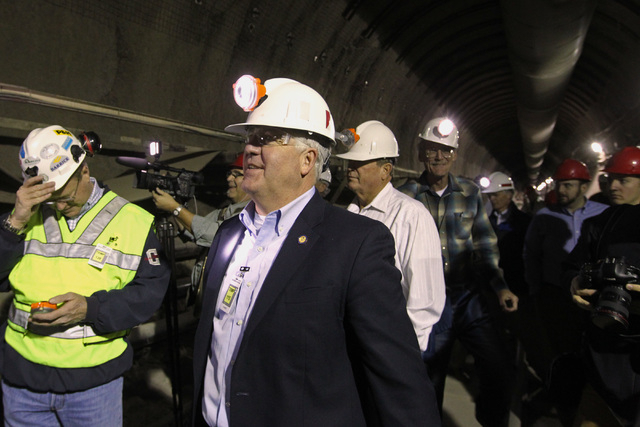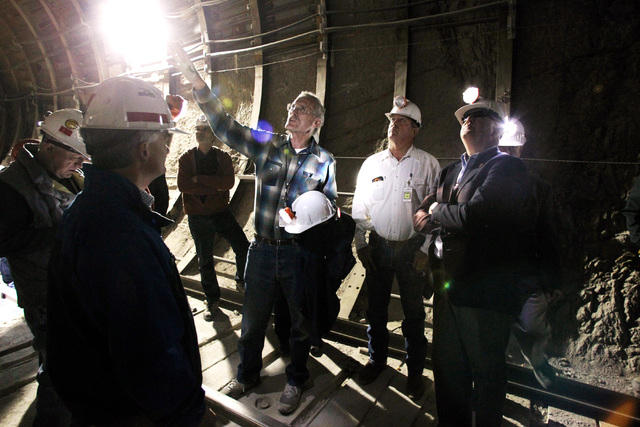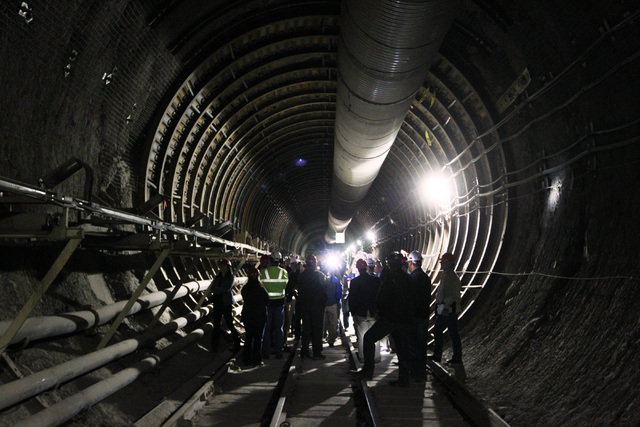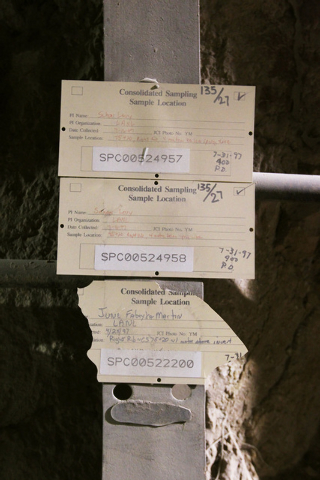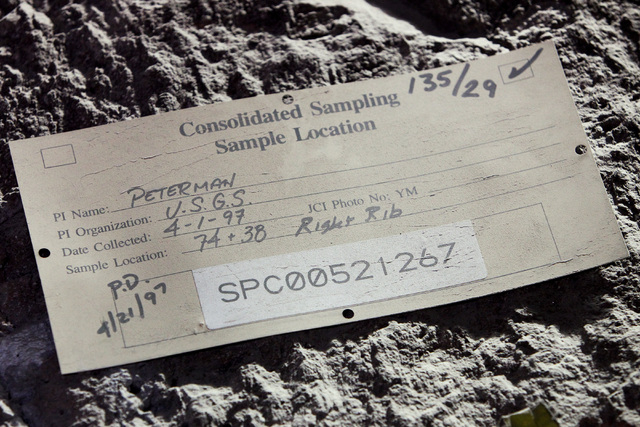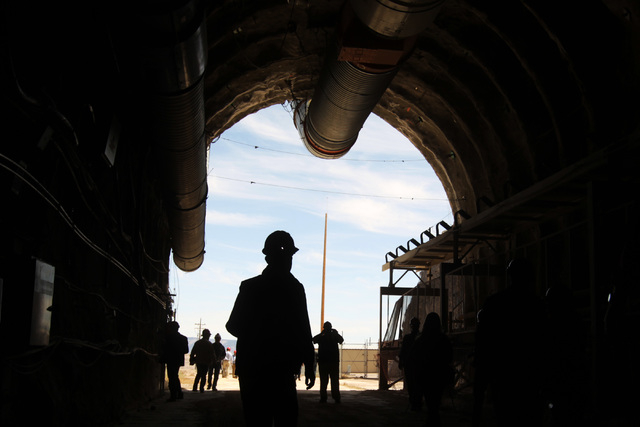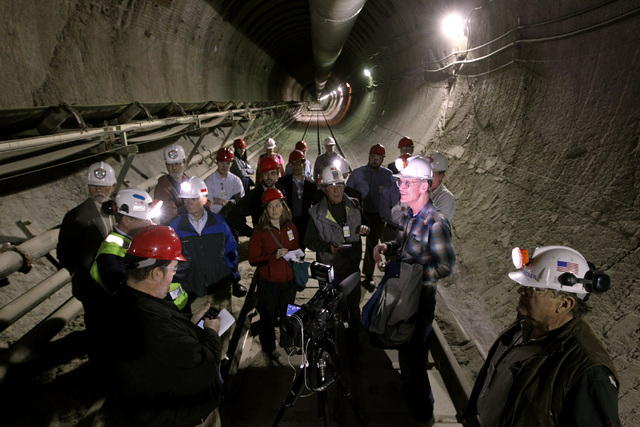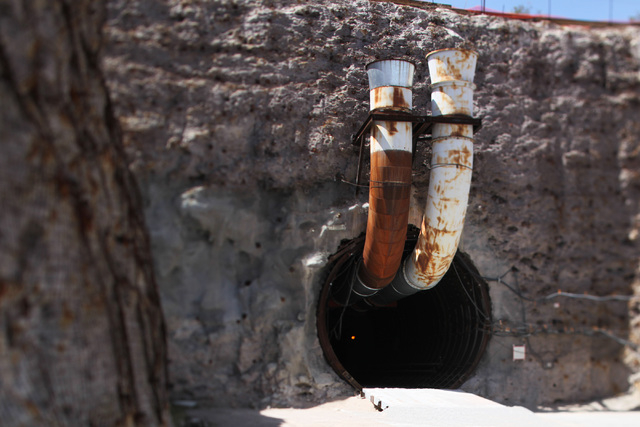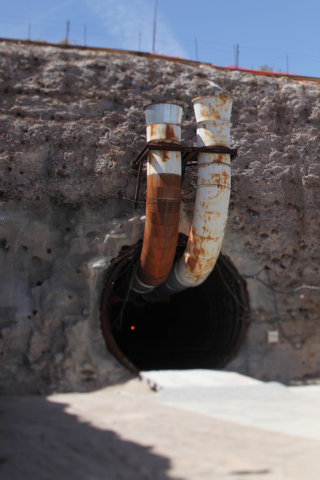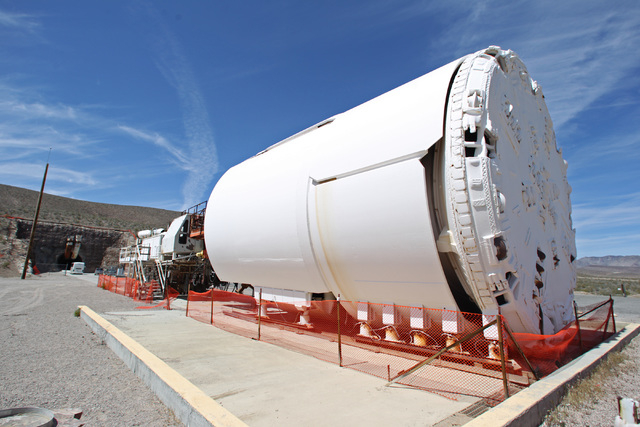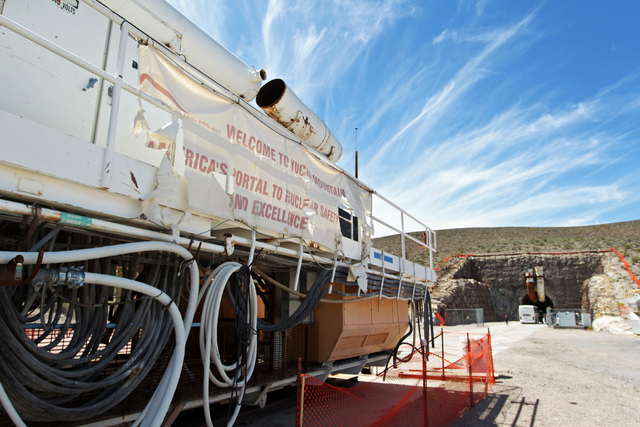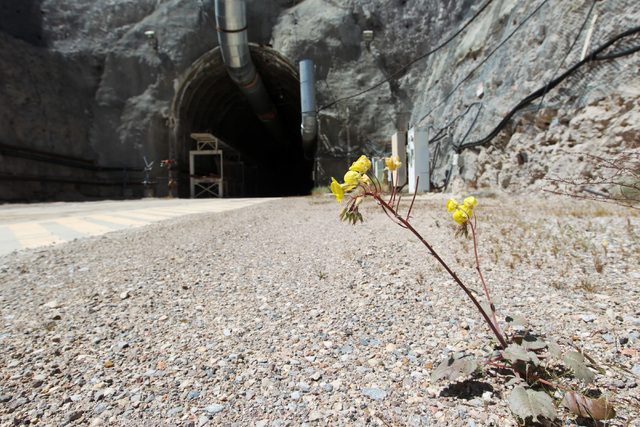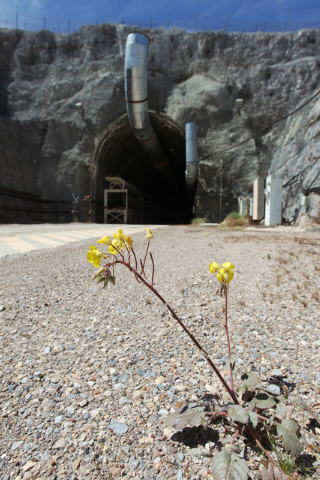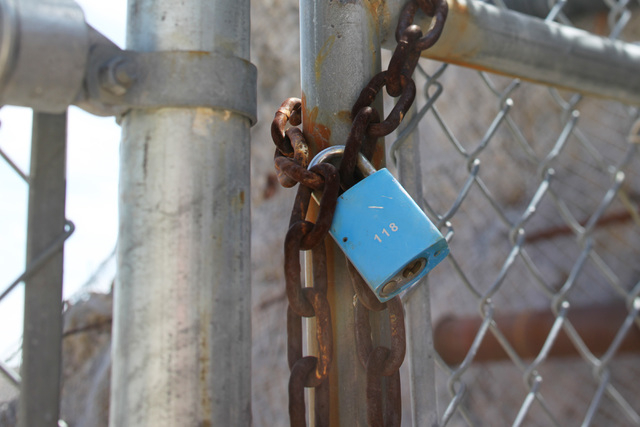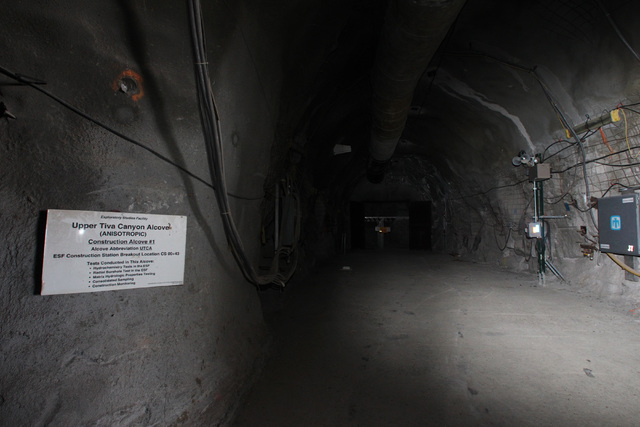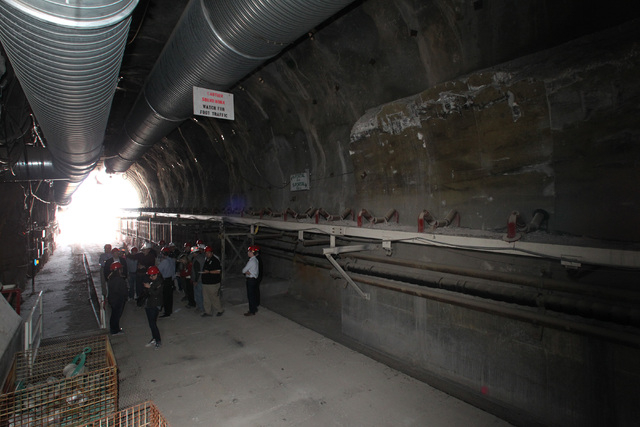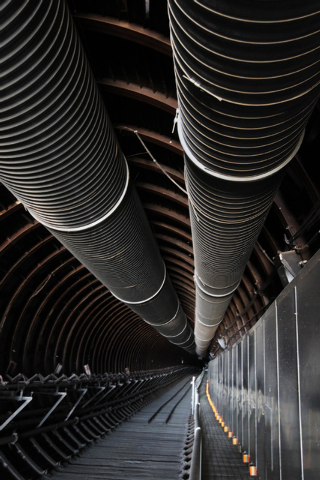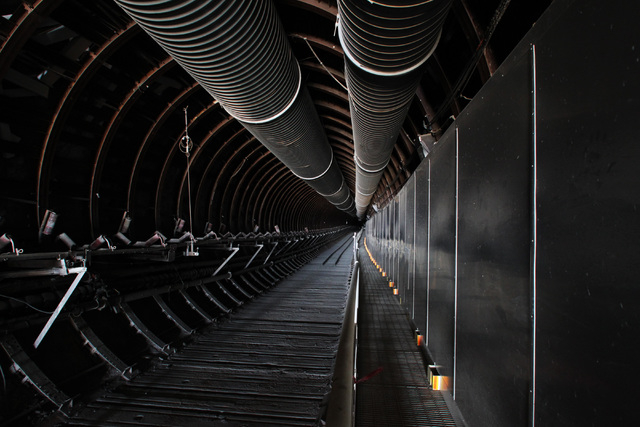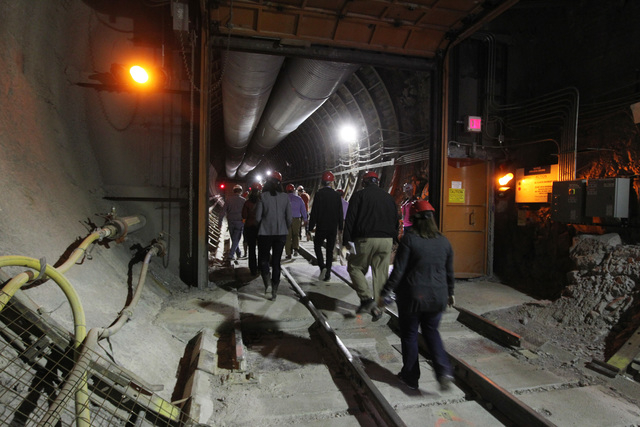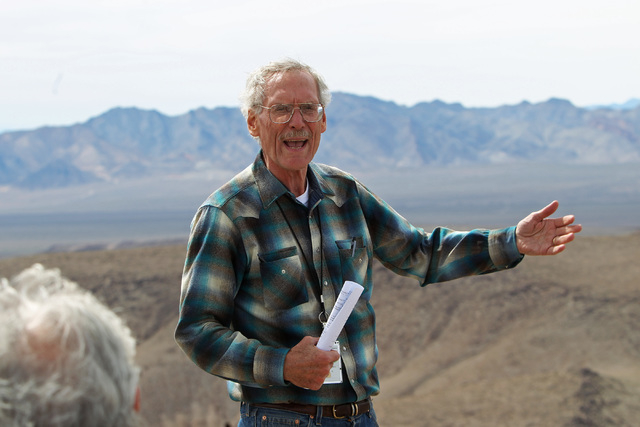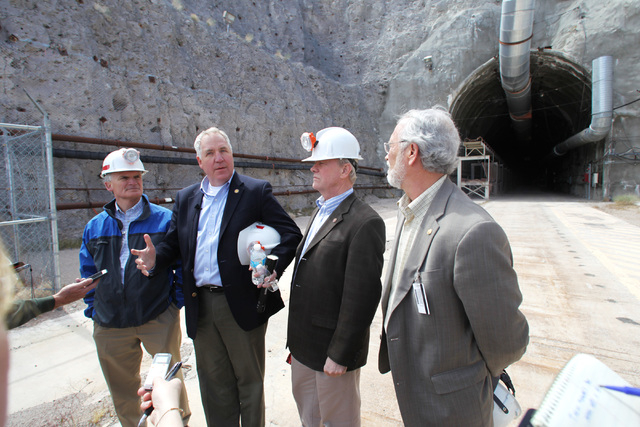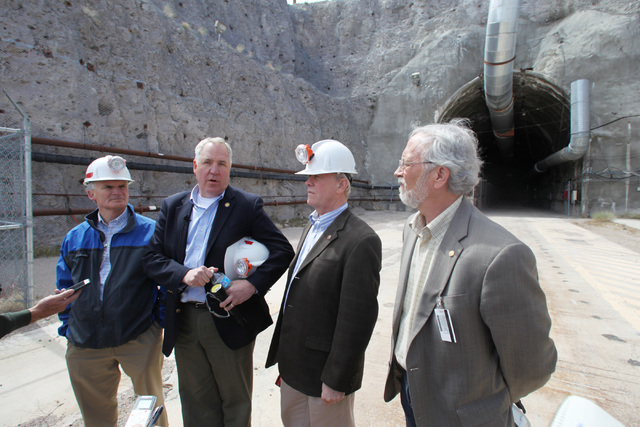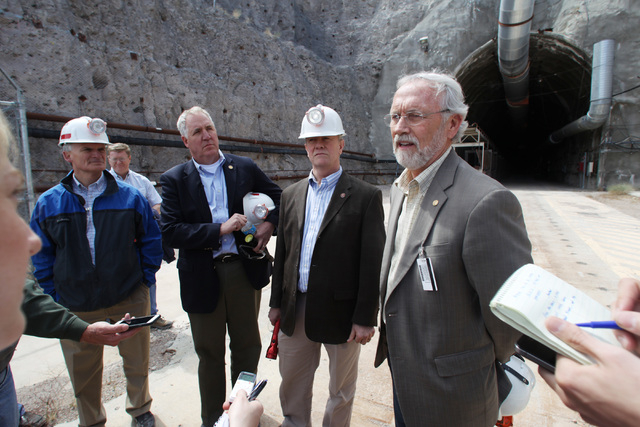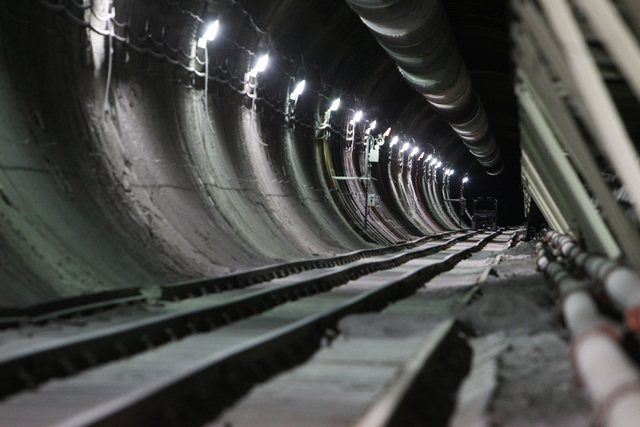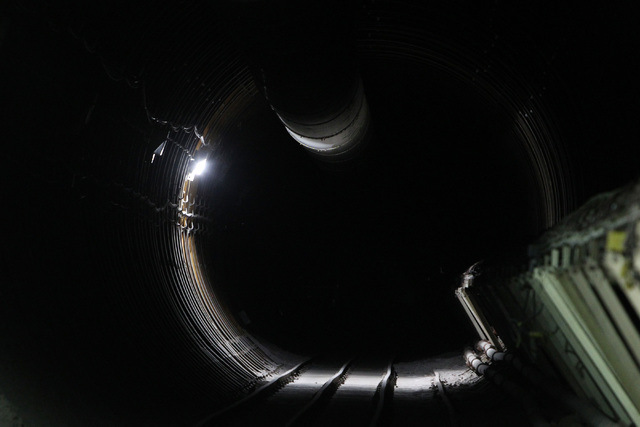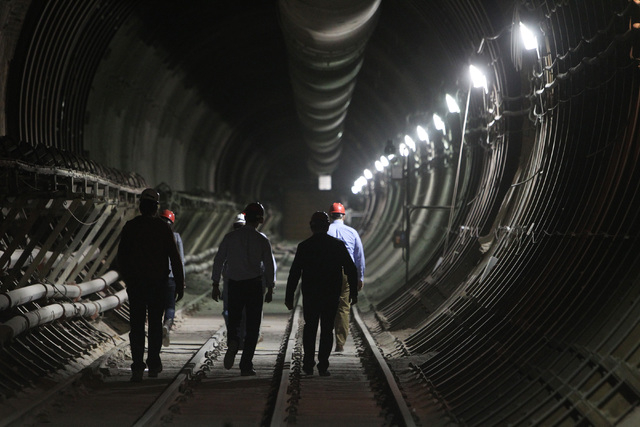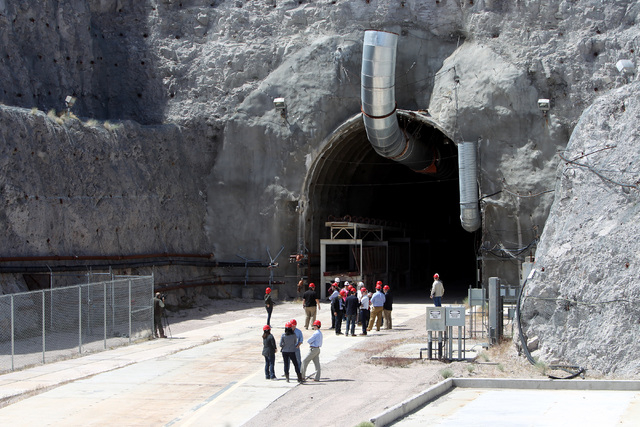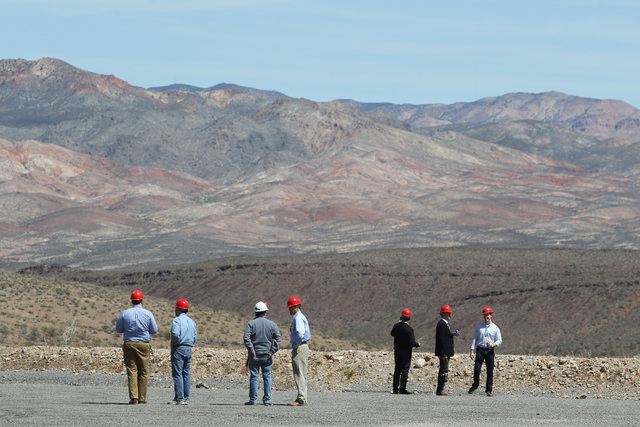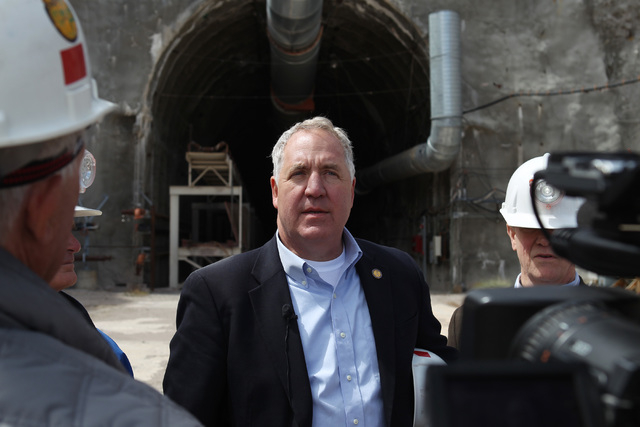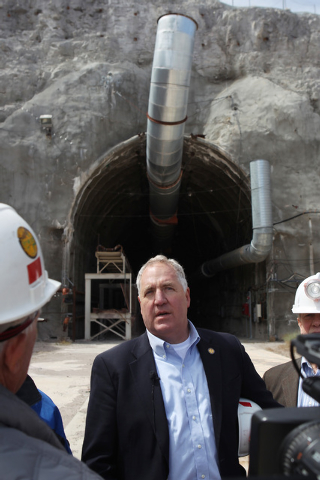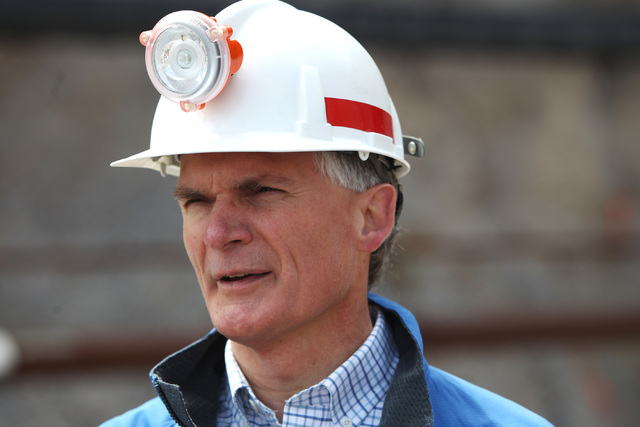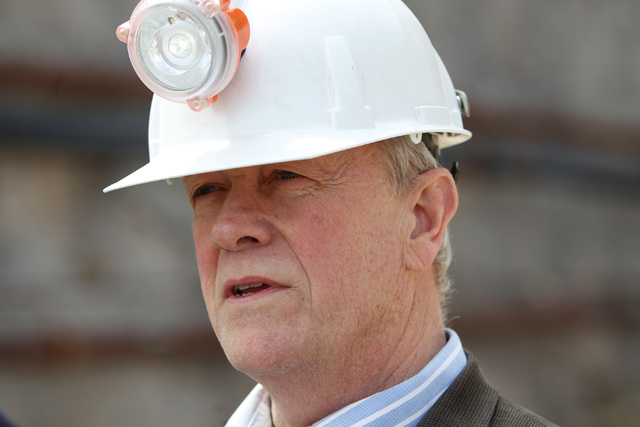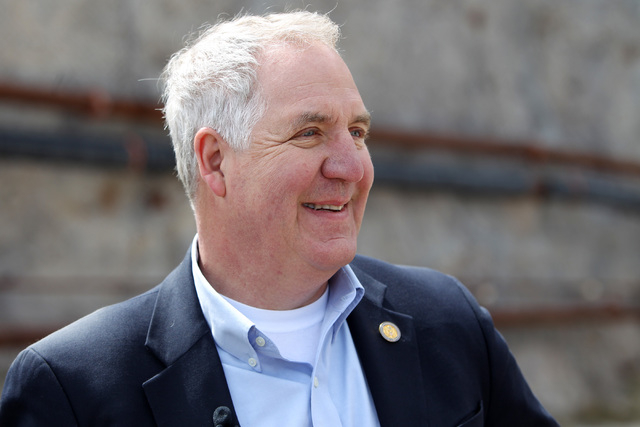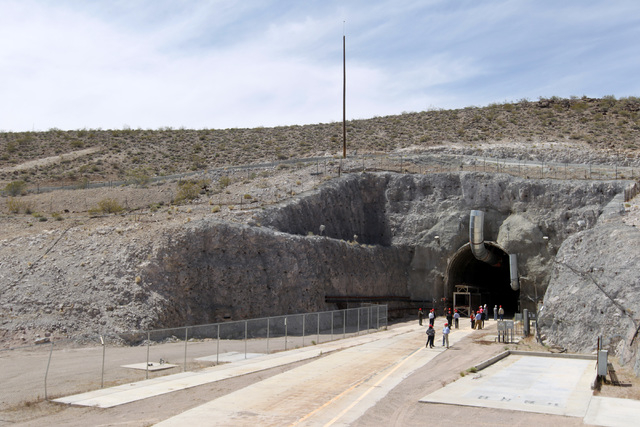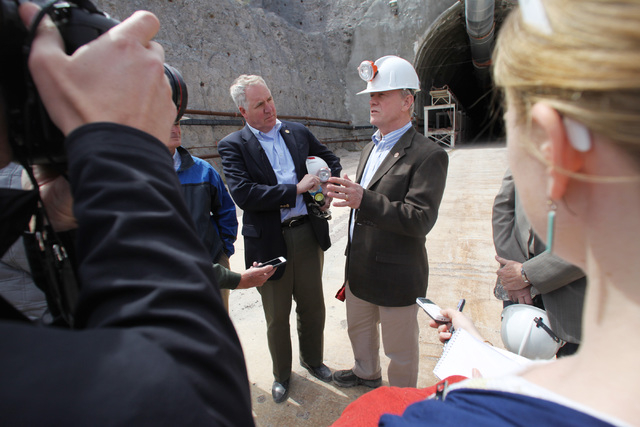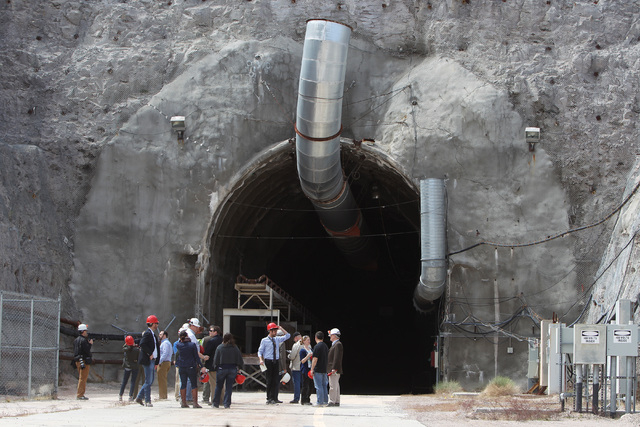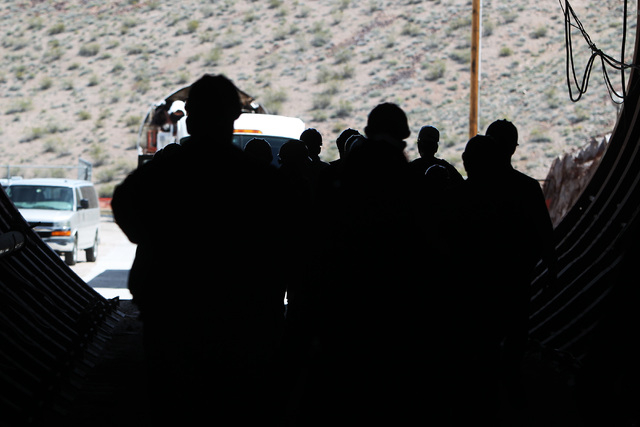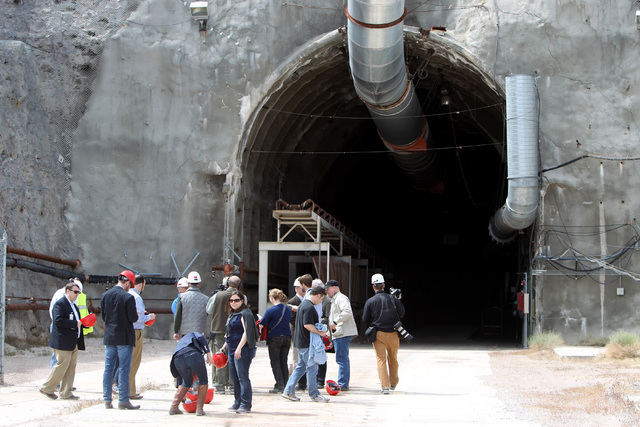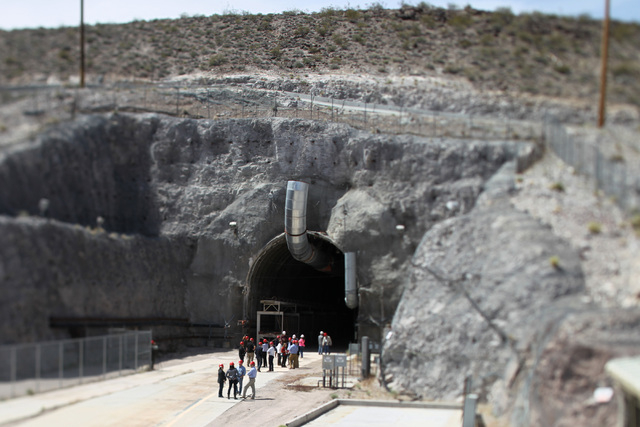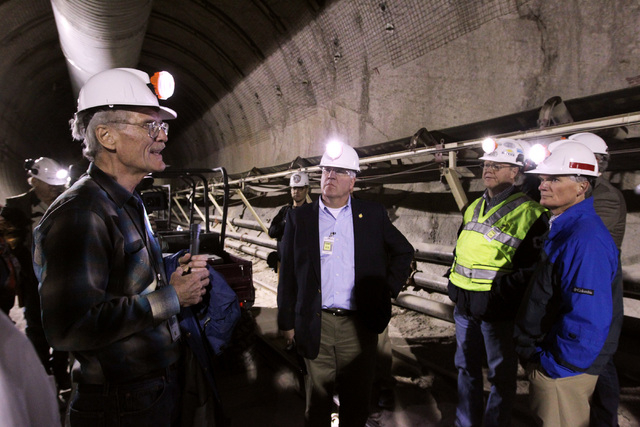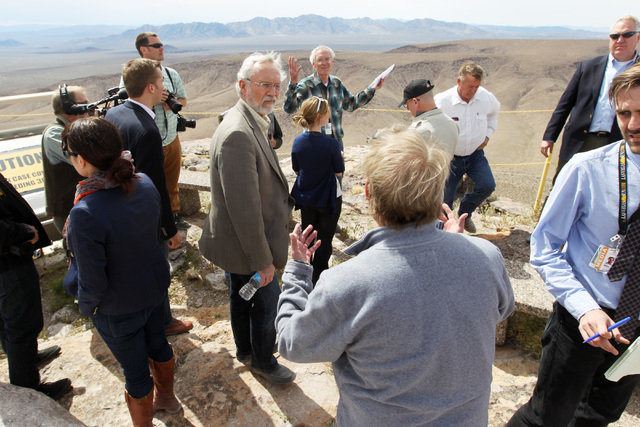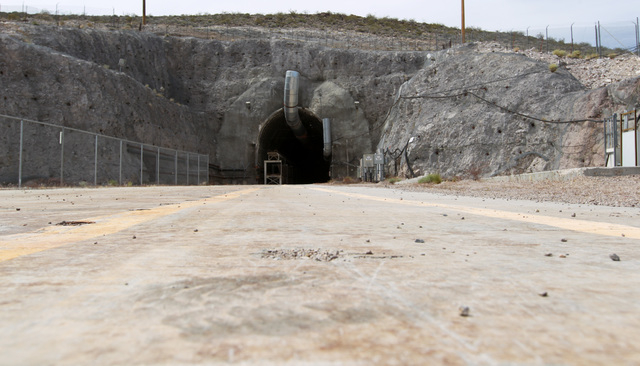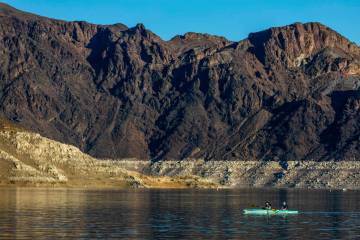6 congressmen go underground, tour Yucca Mountain
MERCURY — The whir of ventilation fans and glow of lights inside the south entrance of the tunnel that loops through Yucca Mountain signaled new life for the shuttered nuclear waste study site for a few hours Thursday while six congressmen toured it.
”It’s 30 years, $15 billion of an investment by the nation. Again, with the facts that the NRC (Nuclear Regulatory Commission) has said, once fully used it will be safe for a million years. It’s an investment that we need to keep in mind as we move forward,” Rep. John Shimkus, R-Ill., said after a 1-hour, 15-minute ride through the 5-mile tunnel on all-terrain vehicles.
Shimkus, chairman of the House Energy and Commerce environment and economy subcommittee, arranged for himself and five colleagues to tour the Yucca Mountain tunnel, including Nevada Republican Reps. Cresent Hardy and Mark Amodei.
Hardy, whose district includes the Yucca Mountain site, 100 miles northwest of Las Vegas, said that the tour was educational and seeing the exploratory tunnel firsthand gave him a better understanding of the process for siting a nuclear waste repository though the Obama administration has abandoned Yucca Mountain.
“I learned that there’s a tunnel in the ground. I learned that there’s science behind some of this stuff,” Hardy said. “I’m glad I came. That gives me a little better understanding how this is set up and what the plans are if it is approved. I think that’s important.”
Amodei said the prospect of restarting the Yucca Mountain Project “is something to think about,” even if the result turns out to be a “nuclear landfill.” With that could come benefits for the state in other areas besides securing more energy and water.
“If you’re going to do research for reprocessing at UNLV like they’re doing in France, if you’re going to do other stuff with DRI (Desert Research Institute), it’s something to think about,” Amodei said.
U.S. Sen. Dean Heller, R-Nev., released a statement critical of the tour. He said it amounted to “nothing more than a poorly disguised gimmick” because a state expert, such as longtime consultant Steve Frishman, wasn’t included in the tour to address flaws with the site and the DOE’s strategy, which relies on engineered barriers to contain the waste.
Heller said Shimkus’ committee “engineered this visit from the very beginning to serve one distinct, self-serving purpose: that of becoming a disingenuous, political sideshow.”
Shimkus acknowledged that officials from the Defense Threat Reduction Agency had toured the tunnel earlier this year, exploring its test-bed potential.
Other lawmakers on the tour were Reps. Bob Latta, R-Ohio, Dan Newhouse, R-Wash., and Jerry McNerney, D-Calif. Newhouse’s district includes the Hanford Nuclear Reservation, where millions of gallons of radioactive waste from government nuclear weapons production were to be converted into glass logs and buried at the Yucca site.
Latta said the tour gave him a perspective on nuclear waste disposal to compare with the on-site storage practice in 34 states.
“This is where it is supposed to be stored. From the hearings that we’ve had and the testimony we’ve had, this is the site,” Latta said.
McNerney said, “In my mind there are two questions. One, is there engineering viability, and that’s going to be a question that’s important across party lines; but the Democrats will take a lot of interest in that.
“The other aspect is the public perception. Is the public ready to accept the fact that there’s going to have to be a nuclear waste site, and will there be any benefit to the local community if it moves forward?” McNerney said.
“I was very impressed by what I saw today,” Newhouse said. “The potential for this as a waste site to me is huge and holds a lot of promise. I want to hear both sides of the story. I want to be sure what we do here is the right thing; and from what I’ve seen today, I’m very optimistic that it is.”
The Yucca tunnel has been shuttered since the Obama administration, at the urging of then-U.S. Senate Majority Leader Harry Reid, D-Nev., allowed funding to dry up in 2010. President Barack Obama later appointed a panel to chart a new path for nuclear waste disposal that excludes Yucca Mountain.
The project, which had been underway since the mid-1980s, reached a peak of 2,750 workers in 2006, when its annual spending approached $500 million.
Only a handful of officials once associated with the program are still working on nuclear issues in the Department of Energy. One is DOE geologist William Boyle, who briefed the congressmen as they traveled through the tunnel and made a quick trip to the mountain’s 4,946-foot-elevation crest.
Boyle, director of the Office of Used Fuel Disposition, Research and Development, declined to offer his opinion on whether the Yucca Mountain Project should be restarted.
In April 2011, Shimkus led a “public education” tour to heighten awareness about what he described as “a national asset that we’re letting go to waste at a cost of $14.5 billion.”
Other than the recent visit by Defense Threat Reduction Agency officials, that 2011 trip was the last time the tunnel was reopened for visitors, and then only briefly at a cost of $15,000. The costs of the latest visit were estimated to be $6,000, Boyle said.
Shimkus, whose state has 11 commercial nuclear power reactors and a sizable fraction of the nation’s highly radioactive waste, hopes he can rejuvenate the abandoned Yucca Mountain Project, whic Reid and Heller recently said is still dead.
Miners began cutting the 25-foot-diameter exploratory tunnel in September 1994 using a $13 million tunnel-boring machine dubbed the “Yucca Mucker.” The loop from the North Portal, 1,000 feet beneath the mountain’s crest, was completed 31 months later after a $74 million journey through the volcanic-rock ridge.
Contrary to Nevada’s stance that evidence would prove the mountain cannot safely contain nuclear waste for periods up to a million years, the federal team hoped to make a case that a repository could be licensed and built to entomb 77,000 tons of highly radioactive spent fuel pellets from nuclear power reactors.
The effort was paid for mostly with money that ratepayers put in a nuclear waste fund.
Since 1987, about $15 billion has been spent on the Yucca Mountain Project. Roughly $31 billion remains in the fund, although collections for it were stopped about a year ago after a court order.
Pending any further spending approved by Congress, the Nuclear Regulatory Commission is under court order to move forward on licensing-related work for Yucca until money in its nuclear waste accounts run out.
Review-Journal Washington Bureau Chief Steve Tetreault contributed to this report. Contact Keith Rogers at krogers@reviewjournal.com or 702-383-0308. Find him on Twitter: @KeithRogers2.



